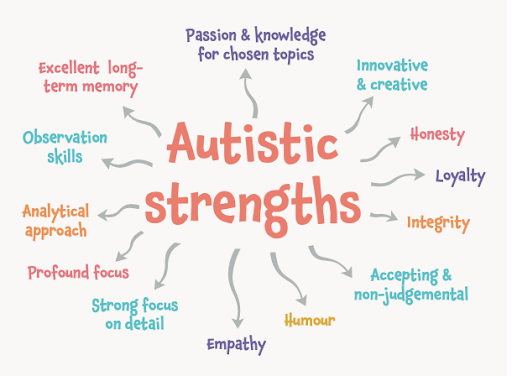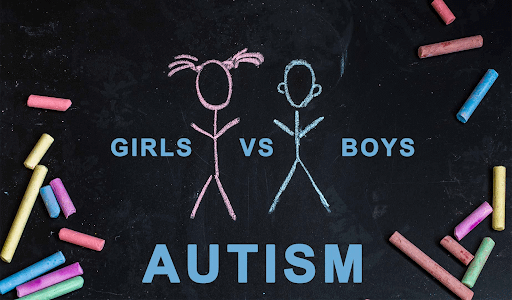
Meet Sarah, a mother to a lively five-year-old boy called Leo. Sarah had noticed from the beginning of his life that he was quite different from other children when it came to expressing himself through humming and other sounds coming out of the mouth.
She was initially perplexed and distressed over this, wondering what could be wrong with him. So she spoke to other parents and professionals who informed her that it was common for autistic children like Leo to humm. It was at this point that Sarah decided to get a better understanding of this aspect of her son’s conduct.
Identifying the Characteristics
This vocal stimming (self-stimulation) often takes place among autistic individuals, thus they are humming or making sound imitations using their voices. Vocal stimming may involve different sounds like buzzes, hums, repetitive phrases, or words among others. These acts can be frequent as well as vary in intensity depending on the child’s surrounding environment and emotional conditions.
In many cases, those children affected by autism use vocal stimming as a way of regulating their sensory experiences, expressing emotions, or coping with stressors.
Understanding this behavior requires empathy and patience because it is seen as a form of self-regulation. Although not harmful in general, vocal stimming might sometimes disrupt social situations the child might be participating. Therefore, finding behavioral interventions that aid in controlling this behavior will significantly benefit both the child and his family.
Practical Solutions in Action
Occupational therapy is one way to manage vocal stimming effectively. Occupational therapists are able to identify the underlying sensory needs that drive this behavior and create plans directed at these requirements.
Sensory Integration Techniques
The primary goal of sensory integration therapy is to help children better respond to sensory information. An example could be making a quiet, sensory friendly place for Alex where he can go when he hums too much. Moreover, integration of some sensory activities like weighted blankets, swings or tactile play can also meet his needs in a more organized manner.
Communication Development Strategies
This may happen because of a lack of communication skills, hence leading to vocal stimming in some cases. Growing a child’s communication skills either by speech therapy or alternative methods such as sign language and picture exchange communication systems can significantly reduce frustration and vocal stimming tendencies. His humming has decreased markedly thanks to Alex discovering novel ways through which he can express his feelings and requirements.
Behavior Modification Approaches
Positive reinforcement techniques like behavior modification are useful in managing vocal stimming. This might involve small rewards such as praise or treats for Alex when he uses quieter means toward self-soothing, thus encouraging him to adapt to new behaviors. Also, establishing clear and consistent routines provides the structure and predictability that many autistic children thrive on.
Activities and Assistance To Help
Humming activities could be managed or redirected through the engagement of children in similar sensory input or relaxation.
Singing or Music Therapy
Since humming is related to sound, music therapy can be an excellent way to channel this behavior positively. Singing along to preferred tunes or songs can not only reduce humming but also make them feel good and more comfortable with others.
Mindfulness/Relaxation Exercises
For example, introducing mindfulness practices such as deep breathing techniques, and guided imagery including progressive muscle relaxation procedures would serve as teaching points for nonverbal calming exercises in these situations without ever getting too relaxed. For instance, Leo has found refuge in daily relaxation exercises where every night before sleeping he gets into contact with his mother to ensure that all of them are relaxed.
Alternative Sensory Activities
Meanwhile, different alternative sensory activities such as fidget toys, stress balls, and sensory bins can help meet a child’s sensory needs in a better way that will be supported by other people. He finds joy in playing with many kinds of objects made of materials like clay or sand, which keeps his hands busy and prevents him from making any noise.
Creating supportive environments and routines is crucial. One way to reduce the anxiety level amongst autistic individuals is through establishing a calm predictable daily routine which reduces the need for vocal stimming. A case in point here is that having specific “quiet time” after school where Alex can engage with his sensory tools has had a tremendous effect on managing his humming noises.
Detailed Case Study with Example
Consider Emily, a seven-year-old girl who frequently hums. Her parents went to an occupational therapist who helped Emily recognize her sensory needs. Emily’s humming greatly reduced as she underwent sensory integration therapy, music therapy and communication development strategies.
The therapist introduced a daily routine that included sensory breaks, mindfulness exercises, and opportunities for Emily to engage in preferred activities like singing and playing with sensory toys. Gradually, Emily learned how to use these new tools in order to self-regulate and lessen the magnitude of her vocal stimming episodes. In their efforts to assist their daughter by being patient, consistent, and individualized in their approach, they realized that it became possible for her to better manage her humming sounds.
Conclusion
Humming is one of many types of vocal stimming that autistic children do as they try to regulate themselves or cope with inputs or feelings from the environment around them. Identifying this particular symptom at the right time can go a long way when it comes to its management. Occupational therapy, communication development strategies, and behavior modification approaches are some reliable ways to get this done.
Vocal stimming redirection can be achieved through music therapy sessions, mindfulness exercises courses or alternative options of sensory activities. Additionally maintaining supportive environments while adhering to a predictable routine helps manage this behavior too.
Emily’s case serves as a perfect example of how the smallest alterations can have significant benefits when done on an individual child. The parents or caregivers should also understand that engaging occupational therapists in caring for children leads to patience and consistency which eventually pays off well for them. Thus, targeted techniques can help children such as Leo and Emily avoid vocal stimming thereby enabling them to live without any discomfort.












No comments yet. Be the first!